The top 3 reasons why your results are plateauing
The Top 3 Reasons Why Your Results are Plateauing

Training for performance or just for health is a great experience of growth, but when the excitement of progress begins to dwindle, it’s natural to wonder “Why the plateau?” I will uncover the top three reasons that might be thwarting your results. Let’s navigate the challenge of adapting to changing fitness levels, shed light on the risk of overuse injuries, and emphasize the pivotal role that variety in exercises plays in sustaining momentum. So, if you’re feeling stuck questioning why your gains have hit a wall, we’re about to delve into the intricacies of these common hurdles, providing insights and strategies to break through those plateaus and revitalize your fitness journey. Get ready to elevate your workout game and bid farewell to stagnation!
Adapting to Changing Fitness Levels:
Progress is the goal, understanding and adapting to changing fitness levels is the cornerstone of continued success. Through the journey we hit peaks and valleys, and acknowledging that your body evolves over time is paramount. Adapting to changing fitness levels are the notions that what once challenged you may no longer provide the same benefits. It’s very important to recalibrate workout intensity, duration, and techniques to align with your current fitness capacity. From tweaking your exercise routine to accommodating variations in stamina and strength, adapting becomes not only a strategy for overcoming plateaus but also a fundamental aspect of evolving. Embrace the fluidity of your fitness levels, and you’ll not only optimize your efforts but also set the stage for a sustainable and progressive approach to achieving your goals.
Overuse Injuries:
Ever felt all of a sudden each workout is getting more and more difficult or draining? That could be the burnout or overuse injuries forming. It’s like a reminder that our bodies are not getting the rest, recovery or nutrition we need. Find that sweet spot between pushing boundaries and giving your muscles the break they deserve. Because, let’s face it, nobody wants to hit a plateau or deal with nagging injuries. This part is all about learning to listen to your body by throwing in those rest days, keeping on track with your diet and keeping your workouts diverse. By overcoming these plateaus, you’re ensuring you stay on the smooth track for the long haul.
The Importance of Variety in Your Workouts:
The importance of variety in your workouts unveil the secret sauce to combatting plateaus. When your body gets too acclimated with the same old routine, the gains can start to fizzle. The power of switching things up in your workouts like trying new exercises and exploring different fitness styles keeps things interesting for the mental and keeps your body adapting to getting stronger. Your body will always get used to doing the same thing over and over again. There’s different ways and variations to workout on the same goals you have. This is the space to embrace the huge variety of exercises that not only elevate your fitness game but ensure that each session remains exciting and effective. It’s time to bid farewell to workout monotony and welcome the true benefits of a diverse and dynamic workout.
Written by:
Dan Aquino – ASFA-CPT
Take action… Now!
Visit us:
Inside of the Flyers Training Center
601 Laurel Oak Rd.
Voorhees, NJ 08043
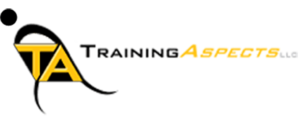

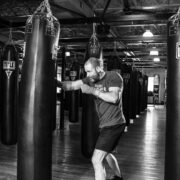


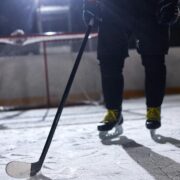


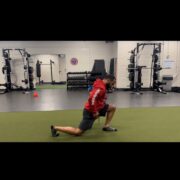
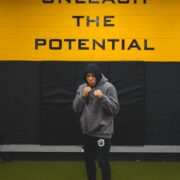

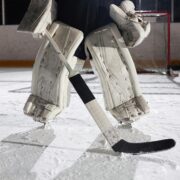
 All goalies and athletes need hip stability; however, goalies need this more than anyone else. Being able to drop into the butterfly and pop back up evenly and explosively on both the left and right sides, as well as being able to drop and push off in either direction, is mandatory. While squatting and deadlifting are important, for a goalie, the ability to be strong moving side to side will bring more value. Incorporating exercises like pistol squats, curtsy lunges, and side-to-side triple extension exercises will not only develop great power but also allow for overall stability. To reinforce these major movements, hip cars, 90-90s, and various band exercises will help create strength in the smaller muscle groups, preventing injuries. While large muscle strength is important, under-developing the smaller muscle groups that support those movements, especially as a goalie, can lead to underwhelming performance and lingering injuries.
All goalies and athletes need hip stability; however, goalies need this more than anyone else. Being able to drop into the butterfly and pop back up evenly and explosively on both the left and right sides, as well as being able to drop and push off in either direction, is mandatory. While squatting and deadlifting are important, for a goalie, the ability to be strong moving side to side will bring more value. Incorporating exercises like pistol squats, curtsy lunges, and side-to-side triple extension exercises will not only develop great power but also allow for overall stability. To reinforce these major movements, hip cars, 90-90s, and various band exercises will help create strength in the smaller muscle groups, preventing injuries. While large muscle strength is important, under-developing the smaller muscle groups that support those movements, especially as a goalie, can lead to underwhelming performance and lingering injuries.

 It would be nice if life never changed and your schedule was always simple and easy to navigate. School, kids, relationships, work… There are many reasons why schedules go haywire. The goal is to find consistency and priority on what is most important. When you’re 21, there is little accountability and responsibility. Maybe you can’t work out and play a sport every day and/or meal prep for a perfect macros food schedule because the schedule is more hectic. I guarantee there are parts that can be salvaged. Start with a 30-minute workout and not eating after 7pm. Will this give you the results you’re looking for in 6 weeks? Maybe not, but I guarantee the results will come though maybe a little slower! Consistency always beats perfection… Because perfection, unfortunately, means inconsistency.
It would be nice if life never changed and your schedule was always simple and easy to navigate. School, kids, relationships, work… There are many reasons why schedules go haywire. The goal is to find consistency and priority on what is most important. When you’re 21, there is little accountability and responsibility. Maybe you can’t work out and play a sport every day and/or meal prep for a perfect macros food schedule because the schedule is more hectic. I guarantee there are parts that can be salvaged. Start with a 30-minute workout and not eating after 7pm. Will this give you the results you’re looking for in 6 weeks? Maybe not, but I guarantee the results will come though maybe a little slower! Consistency always beats perfection… Because perfection, unfortunately, means inconsistency.
 Water is the base of all processes in the body. Though currently, there still isn’t an exact number known per person, the developing athlete should get between 80-120 fl.oz. After a workout, game, or practice, they should drink at least 20oz of water per lbs lost. Keep the fluid in the body up kept and allow the body’s processes to be as effective as possible.
Water is the base of all processes in the body. Though currently, there still isn’t an exact number known per person, the developing athlete should get between 80-120 fl.oz. After a workout, game, or practice, they should drink at least 20oz of water per lbs lost. Keep the fluid in the body up kept and allow the body’s processes to be as effective as possible.